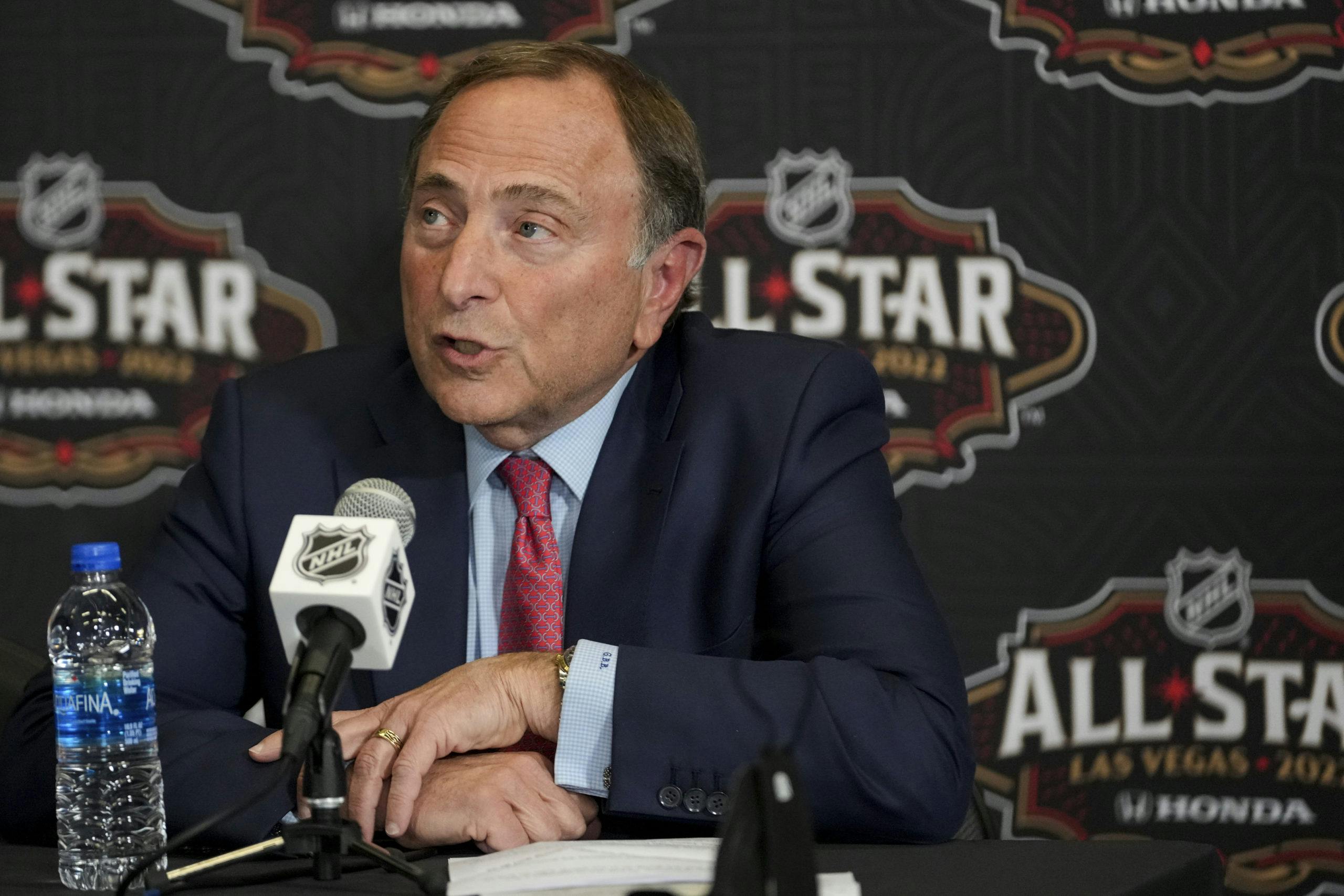Nation Sites
The Nation Network
FlamesNation has no direct affiliation to the Calgary Flames, Calgary Sports and Entertainment, NHL, or NHLPA
Could the NHL’s salary cap go up by more than expected for 2025-26?

Photo credit: Stephen R. Sylvanie-USA TODAY Sports
Over the past few seasons, following the recovery from the COVID-19 stoppage, the National Hockey League’s salary cap has nudged up by 5% per year. That guideline, put in place in anticipation of a slow recovery from the pandemic, has resulted in virtually non-existent escrow holdbacks for players… but has also meant that the cap is way lower than it used to be under the old formula.
Well, according to Sportsnet’s Elliotte Friedman, we could see the salary cap jump up by more than anticipated for 2025-26 in anticipation of a new collective bargaining agreement (and, we’re guessing, a tweaked salary cap formula) in the following season. Friedman explained the situation on Saturday’s Headlines segment:
One of the stories that we’ve been following this week is the salary cap for next year. At this time of year, the players’ association meets with all the players as part of its fall tour. It’s taken added on importance because there’s going to be a CBA negotiation next year.And one of the things they’re talking about is the salary cap, which is supposed to be about 92 and a half for next year. Now, when this deal was done we were in the middle of COVID, we had no idea what the world was going to look like, and there were very careful guardrails put in on the salary cap just in case things didn’t recover. Well, fortunately for the NHL revenues have been strong, they’ve been very good, they’ve out-paced the guardrails on that salary cap. So basically we have two paths to follow here.Number one is they keep the cap next year at around 92 and a half, and then there’s a huge jump the year after, in 2026-27, or what the players say they’ve kind of been told about, is the possibility that the cap moves higher next year, probably around the 95 to 97 area. Now there’s no confirmation yet as which one is going to happen, but I’m hearing that it’s definitely going to be discussed and there is some optimism that they can find a way to do it. But nothing is going to get done until it’s done. It’s definitely out there and the players have definitely been told about the possibility.
Under the old CBA – pre-COVID – the salary cap was determined based on estimates of hockey-related revenue (HRR); they took the HRR estimate, chopped it in half to determine the 50% players’ share, and then divided that up by the teams. However, the use of escrow to ensure that each season’s HRR split was precisely 50% owners and 50% players – combined with the cap being based on estimates rather than actual revenues – meant that a player with a $2 million salary very rarely actually made $2 million, and led to displeasure among players.
In the 2020 CBA extension, for escrow reasons and to guard against slow recovery in HRR after the pandemic, the “lag formula” was introduced. Essentially, it links the salary cap to actual, past HRR earnings rather than estimates of future earnings. It removes the frustration that players experienced with escrow, but it also means that the 50% revenue split is based on HRR from several years ago. Case in point: the 2024-25 season’s cap number is $88 million, for a player share of $2.816 billion (and reflecting a HRR value of $5.632 billion. But 2023-24 HRR was $6.2 billion (or so), the system is leaving money on the table for players and it’s likely going to be tweaked to adjust that in the upcoming CBA negotiations, which start in January.
With league revenues approaching $7 billion (and expected to keep climbing), it seems likely that the cap will keep climbing as well. Under the lag formula, the 2025-26 cap ceiling would be around $92.5 million, so Friedman’s reported jump to the $95-97 million vicinity would be between $2.5-4.5 million more than anticipated. But if you accept Bettman’s revenue claims that revenues are approaching $7 billion, a 50% player share cap number would be $109.4 million per team, and even with a modified lag formula keeping a delay from revenue growth to cap growth intact, we’re due for a pretty big leap in the cap number for 2026-27.
It’s great news for players, and probably great news for the league’s general managers, who oftentimes try to use cap growth to spend their way out of past mistakes.
We’ll have more on this story as it develops.
Breaking News
- What’s Going On In the Pacific Division: The Flames are back in the playoff hunt
- Throwback Thursday: Looking at the Craig Conroy and Mike Cammalleri trades with the Kings
- Flames assign forward Dryden Hunt back to the AHL’s Wranglers
- Some key Flames prospects are distinguishing themselves this season
- Beyond the Boxscore: Flames can’t crawl back against Red Wings in 4-3 loss
